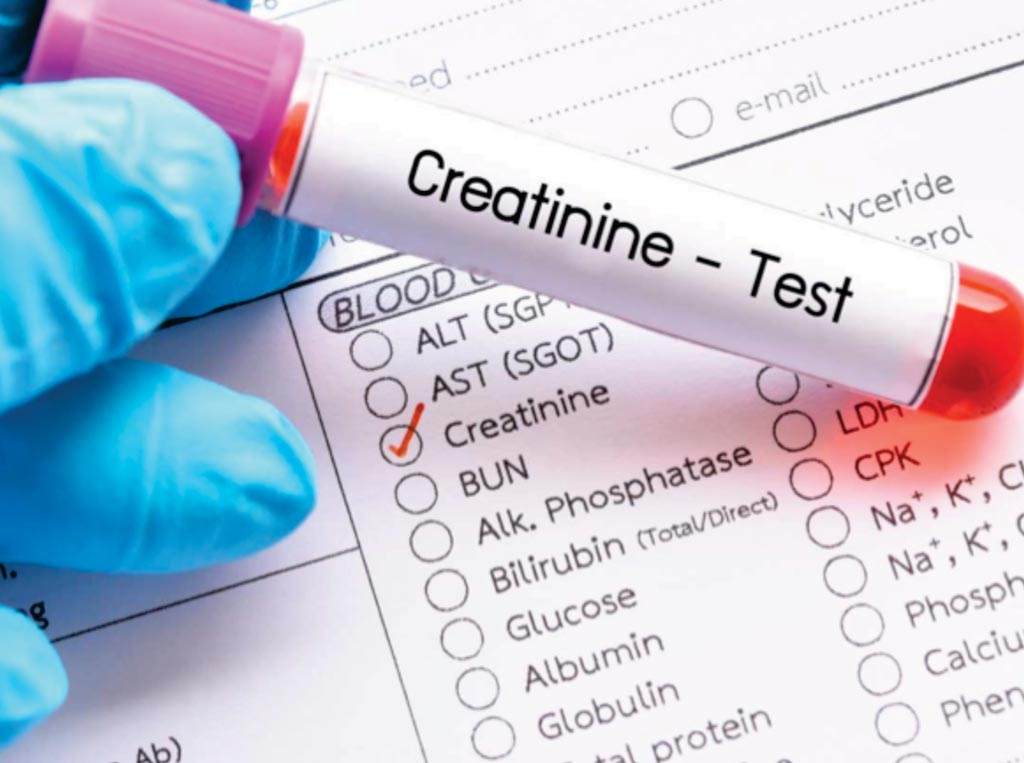Low Serum Creatinine Associated with Diabetes Risk
By LabMedica International staff writers
Posted on 02 May 2019
Creatinine is the only metabolite of creatine phosphate in the skeletal muscle and under the steady state; it is created at a relatively constant rate by the body depending on the total skeletal muscle mass.Posted on 02 May 2019
Because of the close association between muscle mass and creatinine (correlation coefficient equal to or greater than 0.7), serum creatinine is also used as an inexpensive, easily available surrogate of muscle mass when the kidney functions are stable and protein intake is normal.

Image: Low serum creatinine is associated with the risk of diabetes (Photo courtesy of Jo Lewin).
Scientists at the National Center for Global Health and Medicine (Tokyo, Japan) and their colleagues conducted a prospective analysis using data from 31,343 men aged between 20 to 64 years without diabetes at baseline from the Japan Epidemiology Collaboration on Occupational Health Study. Participants were followed for a median of 7.7 years until March 2017 and separated into four groups based on baseline serum creatinine levels: less than 0.7 mg/dL (n = 1,492; mean age, 44.9 years), 0.7 mg/dL to 0.79 mg/dL (n = 6,405; mean age, 42.6 years), 0.8 mg/dL to 0.89 mg/dL (n = 10,848; mean age, 42.1 years) and 0.9 mg/dL to 1.2 mg/dL (n = 12,598; mean age, 43.6 years).
The team assessed the levels of serum creatinine using the enzymatic method and identified 2,509 cases of diabetes in the study cohort. The plasma glucose was measured using either the enzymatic or glucose oxidase peroxidative electrode method. HbA1c was measured using a latex agglutination immunoassay, high-performance liquid chromatography, or the enzymatic method. They defined diabetes as either HbA1c levels ≥6.5%, random glucose levels ≥200 mg/dL, fasting glucose levels ≥126 mg/dL or receiving antidiabetic treatment. The participants who met any of the aforementioned conditions during follow up were treated as incident cases of type 2 diabetes.
Men with serum creatinine levels of less than 0.7 mg/dL were at the highest risk for the condition (HR = 1.56)) compared with men with levels of 0.9 mg/dL to 1.2 mg/dL even after adjustments for age, smoking status, BMI, hypertension and dyslipidemia. Men with serum creatinine levels of 0.7 mg/dL to 0.79 mg/dL (HR = 1.22 and 0.8 mg/dL to 0.89 mg/dL (HR = 1.06) also were at higher fully adjusted risk compared with men with levels of 0.9 mg/dL to 1.2 mg/dL. The scientists further observed that men who were aged 45 years or older had higher risk in all creatinine groups compared with men who were younger than 45 years.
The team concluded that in their study based on repeated measurements of serum creatinine shows that low serum creatinine is associated with an increased risk of diabetes. Screening serum creatinine levels can be used to identify those at a high risk of diabetes. Huanhuan Hu, PhD, the lead author of study, said, “Skeletal muscle is a primary target for insulin action. Thus, decreased skeletal muscle mass could potentially trigger insulin resistance, which is an underlying mechanism of diabetes.” The study was published originally published on February 12, 2019, in the Journal of Diabetes Investigation.
Related Links:
National Center for Global Health and Medicine














